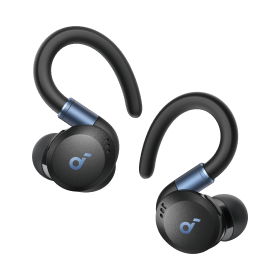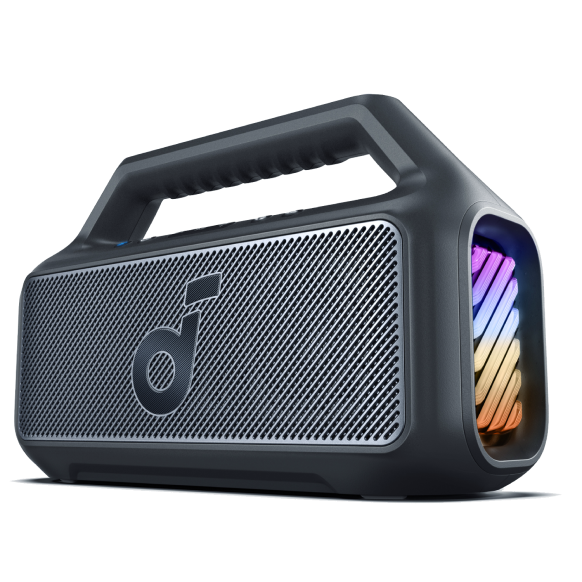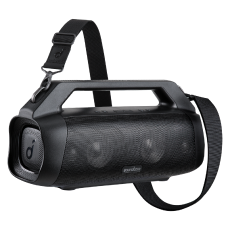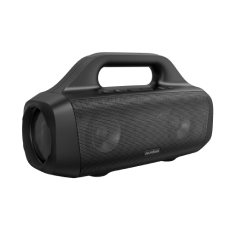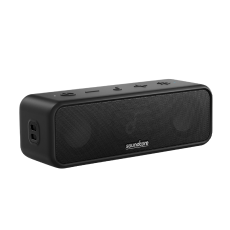Are Bone-Conduction Headphones Safe? What You Need to Know
With the evolution of headphone technology, bone-conduction headphones have emerged as an innovative alternative to traditional earbuds, presenting a unique sound delivery method. As these devices continue to gain popularity, many are left wondering, "Are bone-conduction headphones better for your ears as advertised?" or "Are there any bone-conduction headphones hearing loss concerns?"
To address these queries and clear up any uncertainties, this article delves into the working mechanism of bone-conduction headphones, examining their safety features and looking into any possible side effects. Join us as we unravel the intricacies of this intriguing audio technology and get a thorough and informed answer to the question, "Are bone-conduction headphones safe?"
How Do Bone Conduction Headphones Work?
To address the question "Is bone conduction safe," we must first understand its underlying science and mechanics. Bone-conduction headphones deliver sound differently than regular headphones. Instead of using air to send sound to the eardrum, they vibrate the skull to send sound directly to the inner ear. Here's a simple breakdown:
Transducers: Bone-conduction headphones use transducers that convert audio signals (your music or phone call) into vibrations.
Skull Contact: Positioned on your cheekbones, these headphones relay vibrations through your skull.
Bypassing the Eardrum: Unlike regular headphones that vibrate the eardrum, these vibrations go straight to the inner ear.
Brain Interpretation: Once the vibrations hit the cochlea in the inner ear, they're transformed into electrical signals and transmitted to the brain, where they're perceived as sound.

Are Bone Conduction Headphones Safe?
Having established their unique working mechanism, you might wonder: does this distinct method of sound transmission imply that bone-conduction headphones are safer than traditional headphones? Generally speaking, bone-conduction headphones do present several safety benefits over their traditional counterparts.
Ambient Awareness
One of the prominent safety advantages of bone-conduction headphones is that they allow ambient sound in. They do not cover or plug the ears, enabling users to be conscious of their surroundings. This is particularly beneficial for individuals who might be jogging, cycling, or walking in areas with vehicular traffic. By allowing environmental sounds to filter through, these headphones can potentially prevent accidents and mishaps.
Reduced Ear Canal Damage
When questioning, "Are bone-conduction headphones safer than earbuds," the answer is yes. Traditional earbuds that nestle within the ear canal can potentially lead to compacted earwax, blockages, or even infections from trapped bacteria. Conversely, bone-conduction headphones rest on the cheekbones and bypass the ear canal entirely. This design not only ensures the ear canal remains unblocked—allowing it to self-clean and breathe—but also reduces the risk of creating a moisture-rich environment that might nurture bacterial growth.
Bone Conduction Headphones Side Effects
While bone-conduction headphones are safe and innovative, like any technology, they may have some side effects, particularly when used improperly or for prolonged periods:
Vibration Discomfort
The most notable side effect is the sensation of vibration directly on the skull. For many, this experience can be a bit unusual, especially when the volume is cranked up, leading to pronounced vibrations. While some users adapt and grow accustomed to this feeling over time, others may find it discomforting.
Potential Hearing Strain
If you're questioning whether bone-conduction headphones can cause hearing loss, it's not out of the realm of possibility. Even though bone conduction headphones bypass the eardrum, the cochlea is still involved in the hearing process. Listening at excessively high volumes for extended periods can strain the cochlea, leading to potential hearing issues over time. It's crucial to be mindful of the volume levels, ensuring they remain at a safe range to avoid any long-term damage.
Improper Fit and Headaches
If the headphones are too tight or improperly positioned, they can exert excessive pressure on the skull, leading to discomfort or headache. This discomfort is generally more pronounced during longer use sessions. It's important for users to adjust the fit to be snug yet comfortable, avoiding undue pressure on any part of the head.
Skin Irritation
As with any wearable device, these headphones might cause skin irritation, particularly in conditions of sweat and extended wear. This can be more pronounced for individuals with sensitive skin or allergies to certain materials used in the headphones.

If you're apprehensive about these side effects but yearn for an open auditory experience, we at Soundcore have the perfect options for you. Our open-ear air-conduction headphones are the ideal middle ground, letting you dive deep into your music while keeping you connected to your surroundings.
For those who demand excellence in every beat, our soundcore Aerofit Pro might just be what you're after. Experience air-like comfort with its open-ear design, ensuring you never miss the world around you. The ultra-soft materials combined with a snug fit offered by flexible ear hooks ensure a luxurious listening experience. Add in the robust bass delivered by the 16.2mm oversized drivers, and you're in for an auditory treat. And don't worry about getting caught in the rain, thanks to its IPX5 water-resistant rating with SweatGuard. With a playtime of up to 14 hours on a single charge, extending to a whopping 46 hours with the charging case, your music marathon is backed by impressive battery life. Need to juice up in a hurry? The fast charging feature gives you 5.5 hours of playtime in just 10 minutes.
On the other hand, if you're searching for something feather-light for daily commutes or casual listening, our soundcore Aerofit is here to impress. It offers ultra-lightweight open-ear comfort, ensuring you're always aware of your environment. With well-balanced audio delivered through titanium-coated domes and an enhanced call experience supported by 4 mics and an AI algorithm, your calls will be as crisp as your tunes. IPX7 waterproofing with SweatGuard™️ technology makes it a durable companion for all adventures. Touch controls put the power of your playlist at your fingertips. With 11 hours of playtime on a single charge, extended to 42 hours with the charging case, you're always ready for the next track. And its fast charging ensures you're never out of rhythm, providing 4 hours of playtime with just a 10-minute charge.
Whatever your preference, at Soundcore, we're committed to delivering the best auditory experiences tailored for you.
FAQ
Are bone conduction headphones good?
Bone conduction headphones are unique in that they transmit sound directly to the inner ear through vibrations on the skull, bypassing the outer and middle ear. This design allows users to remain aware of their surroundings, making them a good choice for activities like running or cycling outdoors. They can also benefit individuals with certain types of hearing loss, especially conductive hearing loss. However, in terms of audio fidelity, they might not deliver the same depth or richness as traditional over-ear or in-ear headphones. The decision on their suitability largely depends on the user's priorities and intended use.
Can bone conduction damage hearing?
No, bone-conduction headphones, when used appropriately, do not damage hearing. They transmit sound through the bones of the skull to the inner ear, bypassing the eardrum. However, like any audio device, listening at excessively high volumes for extended periods can strain the cochlea and potentially affect hearing over time.
Do bone conduction headphones work for deaf?
Bone-conduction headphones can be beneficial for some individuals with hearing loss, particularly those who have conductive hearing issues, where the problem lies in conducting sound waves through the outer or middle ear. However, for those with sensorineural hearing loss, which is due to nerve or inner ear damage, bone-conduction headphones might not be as effective.
Conclusion
Bone-conduction headphones are undoubtedly an innovation in the audio industry, offering a unique listening experience while prioritizing ambient awareness and ear health. Addressing the concern, "Are bone conduction headphones safe?" we can affirm that they are generally safe for most users when used appropriately. However, like any technology, understanding their potential side effects and using them responsibly ensures that users can enjoy the benefits without encountering unnecessary risks. Whether you're a fitness enthusiast or just a curious audiophile, bone-conduction headphones are worth considering — just remember to prioritize your safety and comfort every step of the way.
















